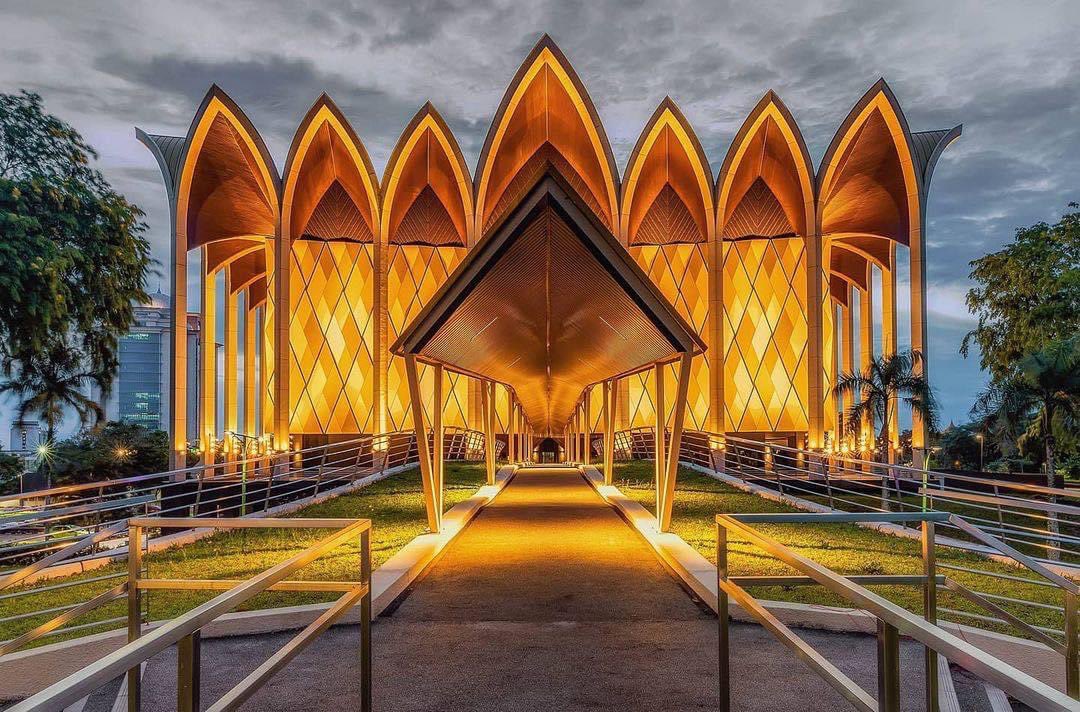Discover the Essence of Borneo Cultures Museum
Discover the Essence of Borneo Cultures Museum
Blog Article
Delve Into the Interesting World of Borneo's Cultural Heritage: A Comprehensive Guide to the Cultures Gallery Experience
Submersing oneself in the detailed tapestry of Borneo's social heritage belongs to starting a voyage via time and practice. The fusion of aboriginal tribes, conventional handicrafts, exciting performances, and historical stories housed within the boundaries of the island's galleries uses a glance into a globe including vibrant custom-mades and extensive legacies. As visitors go across through these repositories of society, they are bid to explore a world where past and existing intermingle, welcoming consideration on the durability and splendor of Borneo's diverse heritage.
Native Tribes of Borneo
Borneo is home to over 50 aboriginal people, each with special social techniques and customs that have been preserved for generations. Among these people are the Iban, known for their conventional longhouses and detailed tattoos where several family members reside.
These indigenous people play a vital function in keeping Borneo's abundant social tapestry. Despite external influences and modernization, numerous people continue to maintain their ideas, custom-mades, and languages. Site visitors to Borneo have the opportunity to immerse themselves in the distinct way of lives of these tribes through cultural tours, homestays, and community-based tourism initiatives. By engaging with these native areas, site visitors can get a much deeper admiration for the variety and strength of Borneo's native heritage.
Traditional Inventions and Artifacts

One prominent example of typical handicrafts in Borneo is the manufacturing of woven goods - Borneo Cultures Museum. Proficient weavers make use of all-natural fibers like bamboo, rattan, and pandan leaves to produce detailed baskets, mats, and devices embellished with colorful patterns that hold symbolic meanings within the neighborhood
The art of woodcarving is an additional significant element of Borneo's traditional handicrafts. Craftsmens carve complex styles into various sorts of timber to create masks, sculptures, and music tools that not only serve functional purposes yet likewise hold cultural importance, typically portraying folklore or spiritual ideas.
Moreover, Borneo is renowned for its beadwork, with artisans thoroughly crafting grains from materials like glass, seeds, and shells to produce precious jewelry, clothing embellishments, and attractive items that display the region's lively aesthetic customs. These traditional inventions and artifacts not only work as substantial expressions of Borneo's social heritage however likewise offer insights into the communities' ideas, worths, and lifestyle.

Cultural Performances and Festivals
With a deep-rooted connection to their cultural customs, the neighborhoods in Borneo come alive through vivid cultural performances and celebrations that celebrate their heritage. These occasions showcase the abundant variety of Borneo's ethnic teams, each offering unique dancings, songs, and routines that have actually been given through generations. Among one of the most distinguished celebrations is the Gawai Dayak, commemorated by the Dayak people to note the rice collecting season. During this event, typical songs fills up the air, elaborate dances are performed, and sophisticated traditional outfits are worn. An additional considerable event is the Pesta Kaamatan, commemorated by the Kadazandusun community to appreciate for the rice harvest. This festival includes cultural performances, consisting of the Sumazau dancing, and conventional sporting activities like the bamboo dancing. Site visitors to Borneo can submerse themselves in these celebrations, home acquiring a much deeper understanding of the region's cultural heritage and experiencing the cozy friendliness of its individuals. Social performances and festivals act as a vivid pointer of Borneo's abundant social tapestry and the importance of protecting these practices for future generations.
Historic Stories and Artefacts
Checking out the historical narratives and artefacts of Borneo offers a remarkable glance right into the region's rich past and social advancement. Borneo's historic tapestry is woven with diverse influences, reflecting the interactions between indigenous people, Chinese traders, European colonizers, and Malay sultanates. The artifacts located in Borneo display this elaborate history, ranging from typical crafts like detailed beadwork and woodcarvings to archaeological treasures such as old ceramic and tools.
Among the most compelling aspects of Borneo's historic narratives is the conservation of dental customs gave with generations. These stories offer understandings right into the beliefs, custom-mades, and day-to-days live of Borneo's inhabitants throughout the centuries. The artefacts uncovered from historical sites use tangible links to these stories, enabling visitors to witness the product society of past cultures firsthand.
Contemporary Cultural Conservation Initiatives

Furthermore, educational programs and social exchange tasks play a critical duty in increasing awareness concerning the relevance of protecting Borneo's distinct cultural heritage. By involving institutions, museums, and the bigger neighborhood in discussions and activities that commemorate Borneo's varied cultures, conservation initiatives can acquire energy and support for long-term sustainability. Cooperations between governmental bodies, non-profit companies, and regional neighborhoods are important in driving these preservation read here ventures onward, making certain that Clicking Here Borneo's abundant social heritage stays lively and treasured for generations ahead.
Final Thought
Finally, the social heritage of Borneo is abundant and diverse, with native tribes, traditional inventions, cultural performances, events, historic stories, and contemporary preservation efforts all adding to its individuality and significance. Site visitors to Borneo's cultural museums can obtain a deeper understanding and appreciation of the region's social heritage, enabling an extra immersive and enlightening experience.
Submersing oneself in the intricate tapestry of Borneo's cultural heritage is comparable to embarking on a voyage via time and tradition.With an ingrained link to their cultural customs, the neighborhoods in Borneo come active via lively cultural performances and events that celebrate their heritage. Cultural efficiencies and events serve as a dynamic tip of Borneo's abundant social tapestry and the significance of protecting these practices for future generations.
Moreover, academic programs and cultural exchange activities play an essential function in raising awareness regarding the value of maintaining Borneo's one-of-a-kind cultural heritage. Collaborations between governmental bodies, non-profit companies, and local neighborhoods are essential in driving these conservation ventures ahead, ensuring that Borneo's rich cultural heritage stays lively and valued for generations to come.
Report this page